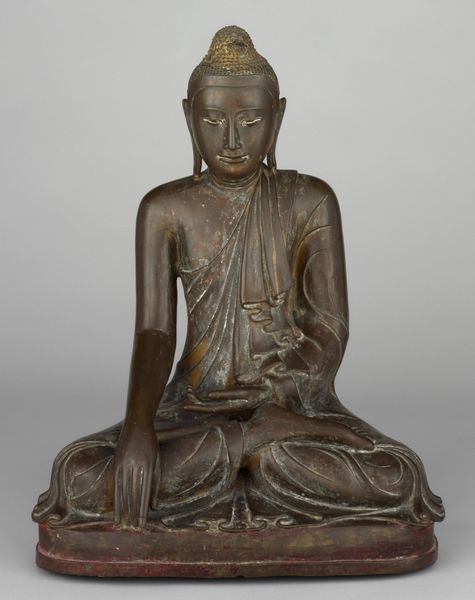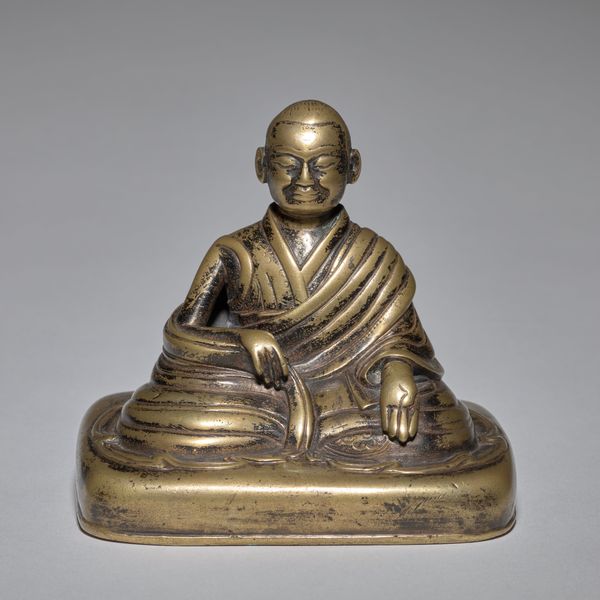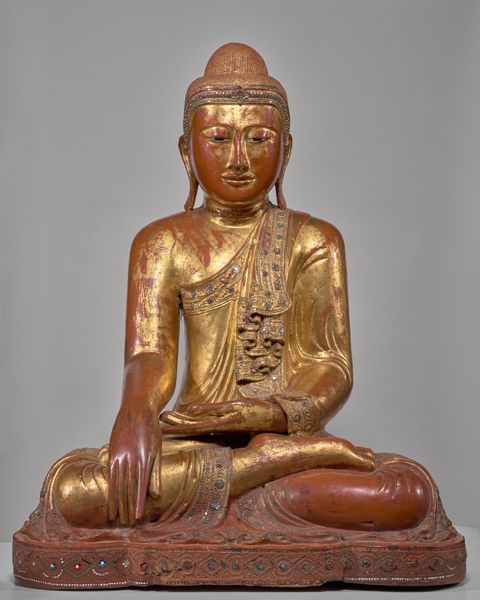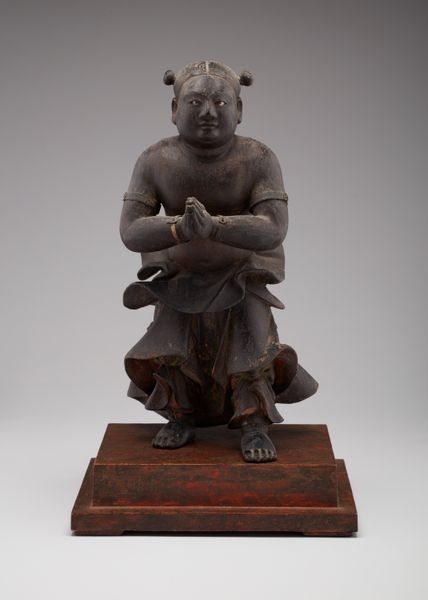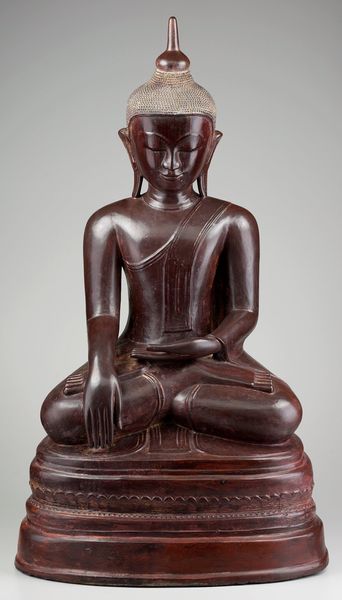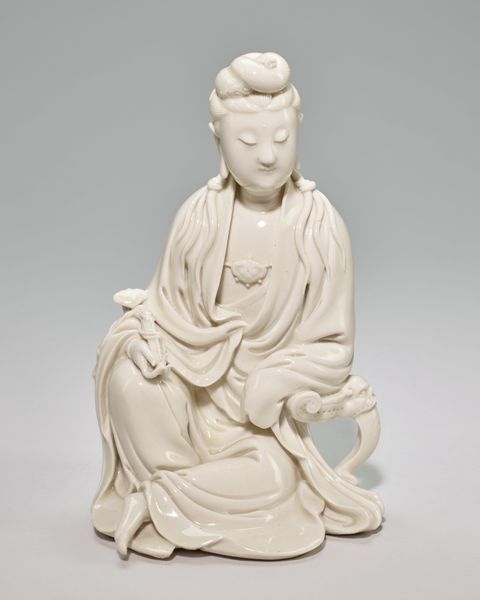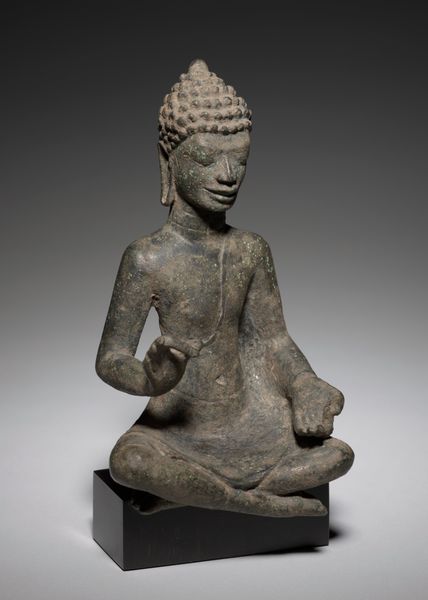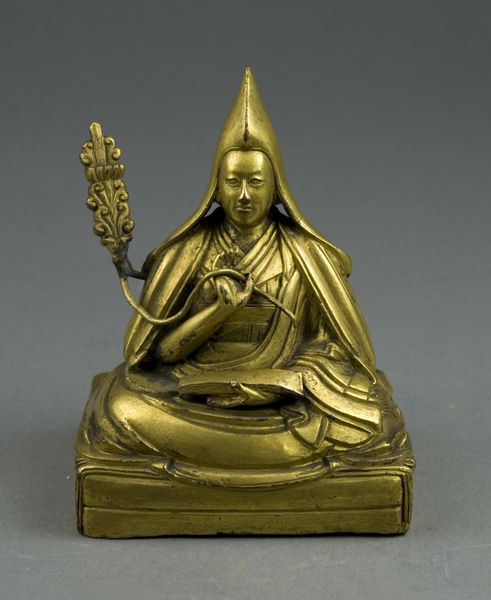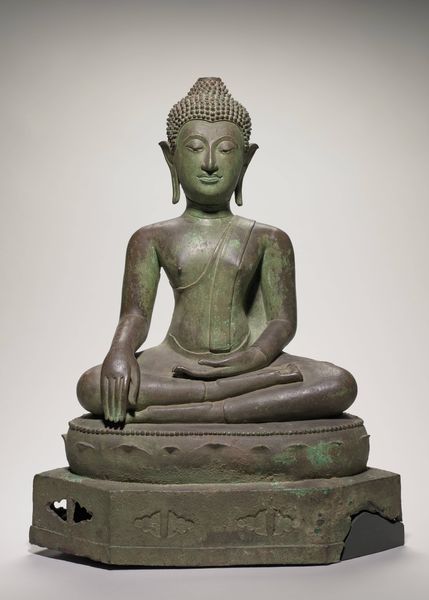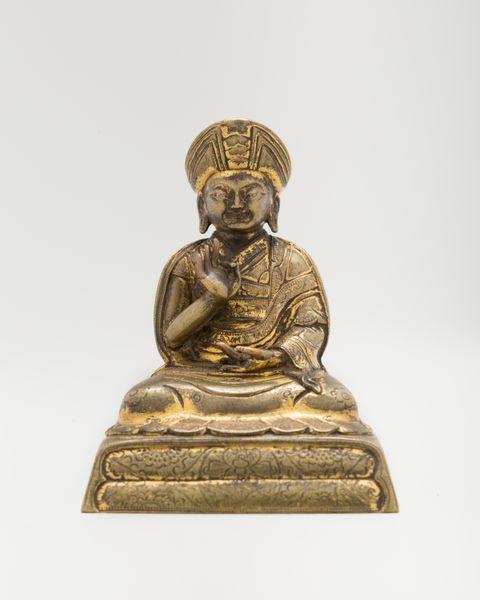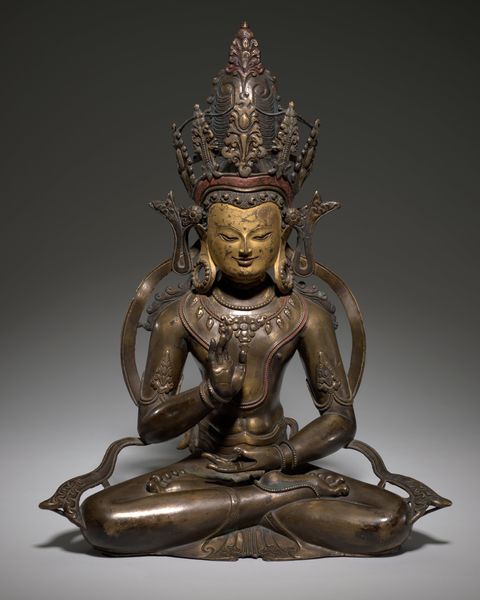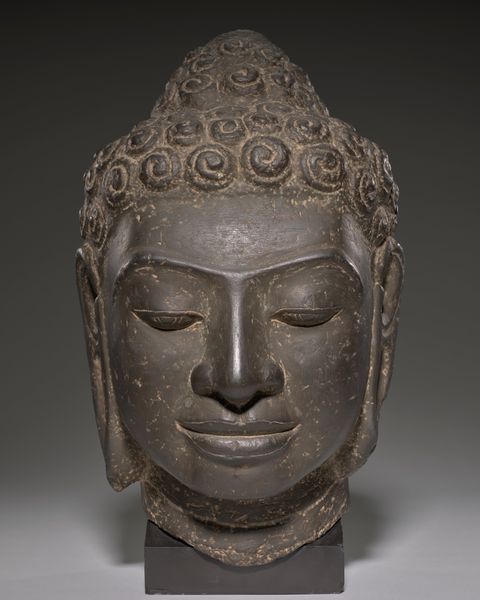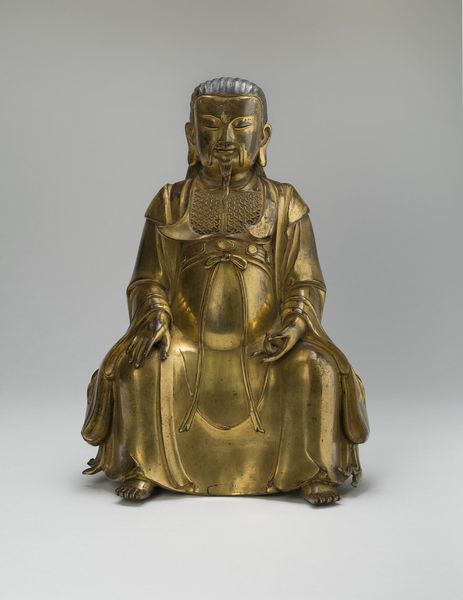
ceramic, sculpture, wood
#
portrait
#
sculpture
#
asian-art
#
ceramic
#
figuration
#
sculpture
#
wood
Dimensions: H. 33 1/2 in. (85.1 cm); W. 28 3/4 in. (73 cm); D. 26 1/4 in. (66.7 cm)
Copyright: Public Domain
Shōun Genkei created this sculpture of a Rakan in Japan in the late 17th or early 18th century from Japanese cypress wood. Wood, of course, is among the most ancient and versatile of art materials, easily carved and widely available, yet here it has been transformed into a compelling likeness of a human being. Genkei likely began with a single block of wood, carefully selecting a piece with tight, straight grain to facilitate the intricate carving process. Using an array of specialized chisels and knives, he would have painstakingly removed material to reveal the Rakan's form. Note the remarkable textures achieved: the smooth, rounded planes of the face contrasting with the deeply incised folds of the robe. The dark, lustrous surface suggests the application of lacquer, adding depth and richness to the sculpture. The process of creating this sculpture would have required not only technical skill but also a deep understanding of Buddhist iconography and the spiritual qualities of the Rakan. By carefully choosing materials and processes, Genkei elevated this wooden sculpture beyond mere representation to a powerful expression of faith and devotion.
Comments
No comments
Be the first to comment and join the conversation on the ultimate creative platform.
